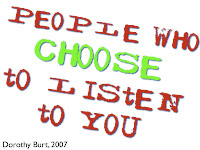The name for our project has been taken from the name given to Maui's fish hook - the tool used for the biggest fishing project ever! For anyone unfamiliar with the story of Maui fishing up the North Island of New Zealand, this animation by Thomas le Bas should give you the idea.
For a number of years we have been aware that carefully chosen, cutting edge technologies can be used as a powerful hook to lure our students into engaging with the curriculum. So when we came together as a group of schools to apply for government funding from an EHSAS initiative - which aims to raise student achievement outcomes and increase engagement in literacies through eLearning integration- Maniakalani was chosen as an extremely apt name.
 The concept of technologies as a hook really began to take shape in March 2006 when we were interviewed by Darren Greenwood of CIO magazine about our podcasting project, KPE, and the magazine created the graphic to the left to depict our idea. This was further developed last year during my research project titled 'The Lure of Podcasting'.
The concept of technologies as a hook really began to take shape in March 2006 when we were interviewed by Darren Greenwood of CIO magazine about our podcasting project, KPE, and the magazine created the graphic to the left to depict our idea. This was further developed last year during my research project titled 'The Lure of Podcasting'.No matter where one travels in the Western world the underachieving tail of the school population using standardised testing is predominantly found in schools from low socio-economic backgrounds. And our Cluster (District) of schools involved in this project has been no exception as all our schools are Decile 1a . So the symbolism of a powerful AND effective hook was adopted for our project. In future posts I will talk more about what the hooks are and how we are trying to identify them, but early findings seem to indicate that they are a combination of compelling technologies and the knowledge of an authentic audience. And to be effective the hook needs to be part of a carefully constructed pedagogy of improvement. More about that next post....



















